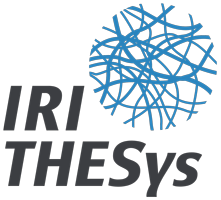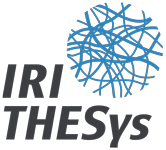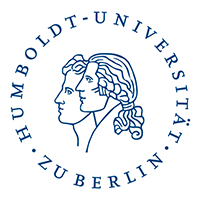A modern observer of nature in the city and on the ice
Christoph Schneider
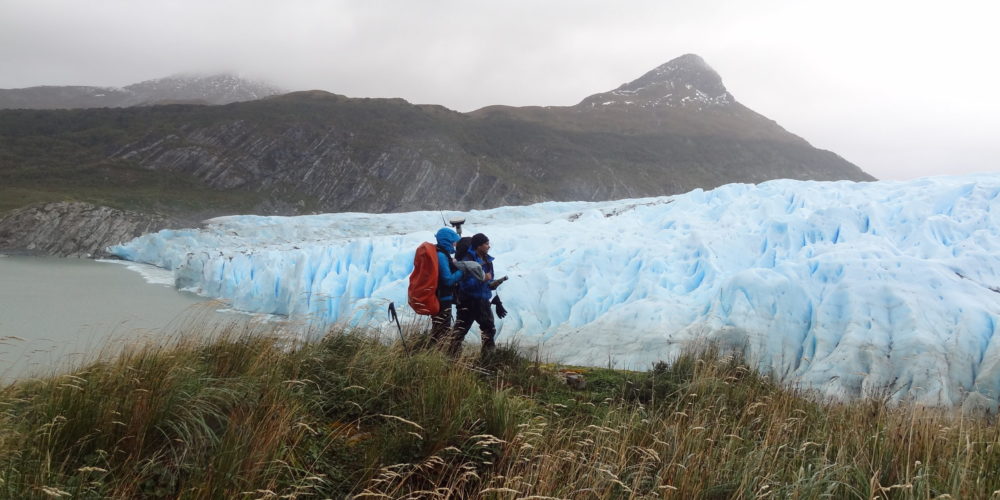
Christoph Schneider knows how to visualise the melting of glaciers and how to count dust particles in the air and soon he even wants trees to communicate with us. The geographer and physicist holds the professorship for Climate-Geography at the Geography Department at HU since October 2015, replacing Wilfried Endlicher. He works on glaciology as well as urban climatology. As observer of nature he uses the most modern technical know-how and can be described as a researcher with multiple interests.
“Today polymaths such as Alexander von Humboldt do not exist anymore, but it is definitely an advantage if one knows more than one discipline. It helps with understanding linkages as well as teaching them”, says the scientist who was working in Freiburg and Aachen before coming to Berlin. Schneider compares working at Humboldt-Universität with winning the lottery. The network of three universities and numerous other scientific institutions makes Berlin to an agglomerate of geographic research. Schneider perceives the exchange with the humanities and physics as very inspiring in his research.
How climate change melts glaciers
Christoph Schneider currently contributes to an exchange with the general public within the special exhibition “Extremes! Nature, Culture and the Humboldt Current” taking place in the Humboldt-Box. The exhibition depicts a forecast on the work that will be done in the future at the Humboldt Forum. In a video-loop the researcher explains the climate phenomenon El Niño, a natural climate anomaly in the Pacific whose ecological and economic consequences can be felt globally and are accelerated by anthropogenic climate change.
As glaciologist Schneider researches the effects of climate change on the movable ice and snow masses of the Earth which are melting due to rising temperatures. “Due to the melt water the sea level is rising. On a long term basis this will lead to flooding in the coastal areas where we often find cities with millions of inhabitants. In summer, the agriculture in dry areas lacks the melt water, thusly threatening global food security”, says the expert who has been researching for a long time in the South West of Patagonia amongst other areas. Since 1999 Schneider has often been working in Chile where he and his colleagues are dropped off in remote locations by the local navy. “14 days without communicating with the outside world, just a satellite phone for emergencies”, that is how he describes his fieldwork in the still natural landscape in this region.
To observe environmental changes the scientists drill for instance measuring rods twelve metres deep in the ice or set up time lapse cameras with long lasting batteries. “If you return to the same place half a year later the measuring rods often have moved eight to ten meters out in the sea as all the ice has melted. And the pictures which were taken in regular intervals are converted to time lapse films visualising the movement of ice and snow.” Such a time lapse film can also be seen in the Humboldt-Box.
The scientist is especially pleased when his research can help to better protect people from the effects of climate change. To this end Schneider not only works in Patagonia, but for instance also in small glacier-rich regions in the high mountains of Tadzhikistan and Kirgizstan. Together with the Geoforschungszentrum Potsdam local communities are supported with their water supply. “That is transdisciplinary research in the context of development assistance where our models can really help.”
How particulate and ultra-particulate matter affect our health
Christoph Schneider also wants to help to improve the urban climate in Berlin. The capital is characteristically known for its high particulate pollution and deficient air quality which poses a health threat to its inhabitants. According to Schneider a known dilemma is responsible for that: “Due to architectural and social reasons a compact city is a more lively city, everyone wants to live like that. However in terms of air quality and urban climate a very compact city creates real problems.”
While particulate matter from the desert is less health threatening and salted air from the sea is even good for our health, it is different with manmade particulate matter. Anthropogenic particulate matter can for instance lead to bronchial diseases or cause viral croup in children. The urban climatologist Schneider has therefore specialised in particulate and ultra-particulate matter and their spatial temporal distribution.
He lists combustions engines, dust from braking abrasion and wood fire places as main sources as well as industrial emittors such as power plants which, although they are equipped with filter technology, still emit ultra-particulate matter. “In each room we have millions of invisible particles. They are so tiny that they do not deposit, but they are flowing in the air and therefore also through every filter”, says the scientist.
But how do you measure something which is so invisible. “The necessary measuring equipment has only been developed in the last 5-10 years”, Schneider explains. He has just recently bought two new facilities and improved older ones at the Geography Department. “Usually air is absorbed into a pipe an ionised. In that case particulate matter can be counted exemplarily in form of electric impulses in an electric field and then be extrapolated.” Those numbers are important to encourage politicians to implement policies for pollution-limits in the air.
In order to do so, a measuring campaign is being prepared at Campus Adlershof. Not only a long term measuring station is built – another one is currently being developed at the cooperation partner TU – Schneider and his team also prepare a Volkswagen Transporter for mobile measurements. “With the transporter, we will visit 10 measuring sites in Berlin, once in summer, once in winter, for about two weeks each. There we will need the support of the local population as the balconies of local residents are the best and most secure locations for mobile measuring devices.”
What trees can tell us about urban climate
But there are also other sources which can deliver useful data for scientists. Trees can become valuable informants as they save climate and weather data as chronicles in their rings. Christoph Schneider recognised this potential and has recently been granted a project by the Deutsche Forschungsgemeinschaft (DFG) for sampling 150 trees in Berlin. With their help the development of Berlin’s urban climate of the last 60 to 70 years, in different areas – from Kreuzberg to Grunewald- will be “measured”.
But how does it work? “Using the so called dendochronology a small drilling core is taken from every tree. It is prepared with a kind of glue and then scanned under the microscope. The width of the tree rings tell us how the trees reacted toward their environment, for instance toward dry periods or high temperatures”, explains the scientist. Thereafter the results will be compared with climate data from the surroundings of Berlin to localise urban specific phenomena. In this procedure the trees will not be harmed. “We already convinced the wood protection offices from the local administrations”, Schneider assures. The project will start in June 2017.
Contact
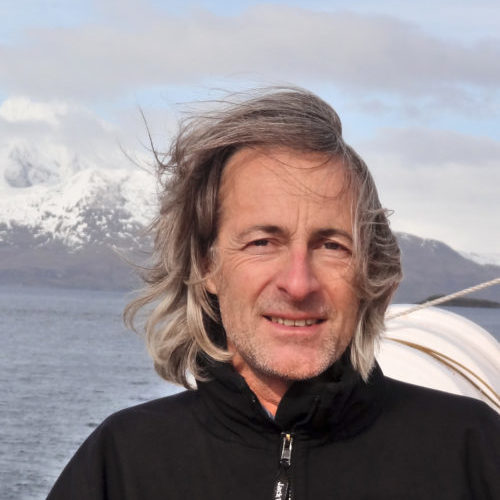
Christoph Schneider
Email:
Initially Christoph Schneider wanted to become a scientific journalist, but he then became a scientist himself. After studying Geography and Physics he received his PhD at the University of Freiburg where he also habilitated. He accepted a professorship for Physical Geography and Climatology at the Rheinisch-Westfälische Technische Hochschule (RWTH) Aachen where at times he was also working as managing director of the Geography Department as well as dean of the Faculty of Georesources and Materials Engineering. Since October 2015 he holds the professorship for Climate Geography at the Geography Department of Humboldt-Universität zu Berlin. Since April 2016 Schneider is also a member of IRI THESys.
